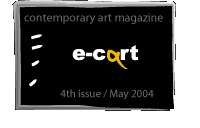





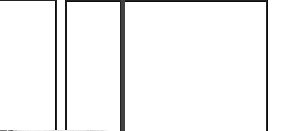





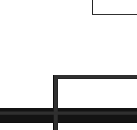



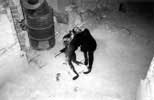
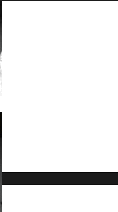




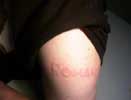


The Private and the Social Body. Romanian Artists before and after 1989
Ileana Pintilie
From a political point of view, Romania had a special place within the communist block together with the installation of a dictatorship that seized power for over 20 years. Propelled at top of the political hierarchy by mid '60s, Ceausescu made his debut leaving the impression of relaxation in the interior, an apparent opening towards the West, as well as an equally apparent detachment from the Soviet Union. These clever moves consolidated his position, so that at the beginning of the '70s, he launched a mini-"cultural revolution", inspired from China and North Korea, countries which he sincerely admired. These political circumstances converged to the creation of a special situation in Romania, whose recent history differs from the neighbours' belonging to the same communist block to a certain extent. The moment of political, social, and cultural opening culminated with the famous year 1968, somehow a year of turnover for the European civilisation. Then, Ceausescu overtly opposed the invasion of Czechoslovakia, remaining thus isolated from the rest of the communist countries, but gaining the sympathy of the western countries altogether. Instead, while the soft wind of the Soviet "perestroika" was blowing by the end of the '80s, in Romania the political and social situation was worsening, reaching an already paroxysmal peak. A consideration over the Romanian art during the communist period will point out a schizoid splitting of the artistic activity. On the one hand, there was the official art, which still kept a conservative allegiance towards the classical genres (picture, sculpture, graphics, etc.) and the triumphant air with which it emphasised the "new realities", despite its gradually giving up the realist-socialist thematic proper. On the other hand, there was the underground art, in which we can include a series of artistic experiments or forms of art that had been born after an extremely personal research or even after social-political frustrations. Usually, the latter could not enter the public circuit, as they were systematically eliminated from exhibitions by the vigilant censorship. Among the forms of art approached by a small group of artist were the actions developed in the most various and unusual conditions and under the pressure of the censorship and the power's control: in a room, in front of a mirror and before the lenses of the photo-camera or of the cinecamera, outside the city, or in corners away from the city area (the terrace at the roof of a block of flats, etc.). We preferred here to avoid the universally accepted terms of happening or performance, because these forms of art developed under conditions that were completely different from those in the West, even if the forms of art they generated eventually look similar to the international movements. We considered more appropriate to use the term action to suggest the unfolding of an event in any framework, with or without audience. The unfavourable political conditions eased certain secrecy among artist, so that this kind of non-conventional visual events evolving in a private space (sometimes, simply the apartment or the studio) were presented only to a few "initiates", well informed of what was really happening in the artists' world. In these private spaces, movie projections were organised, small festivals with actions or even exhibitions were held. The rare public spaces hosting a few of these events were not at all professional (the lobby of the Institute of Architecture from Bucharest or the German Cultural House, etc.). The general atmosphere in Romania symptomatically influenced the creation of some artists belonging to this period. One of them is Paul Neagu, who made his debut around 1966-1967, in that very moment of short creative freedom. His desire to break away from the academic tradition, as well as his inquisitive spirit, led him to the creation of a series of neo-Dadaist works entitled Neagu's Boxes. Small objects of variable form, created with an inexhaustible imaginative verve, these "boxes" became fetish objects. They addressed the tactile sense which had to be recovered after it had been neglected for such a long time by an insipid art. In contrast with the official art of that time, these objects exhibiting their simple three-dimensionality, suggesting compositions and de-compositions of form, were often made of ephemeral materials such as match-boxes, or were improvisations from leftovers from other objects. The art they represented defied the official art. Such objects began circulating, taking on a life of their own, with a secret content whose meaning was known only to the "initiated". When these objects appeared they brought with them a cultural aspect related to their form and intention and a communication aspect evincing their sociological valencies. Neagu's Boxes became ironical and self-ironical commentaries addressed to the social context which had given birth to them. They introduced the ludic into contemporary Romanian art, a free and easy manner, an artistic attitude of disinhibition in a tense cultural environment. At the same time, the "boxes" symptomatically offered a look inside of a closed world, which could be symbolically associated to the Romanian world, isolated from both the regional and the international context. Significant from this viewpoint is the artist's photo of himself behind such an object, as if being behind bars, thus stressing a spiritual state of captivity that intellectuals already felt in those years. As a continuation of this development (1966-1967), a year later there appeared the series entitled Colector de merite (The Collector of Merits), consisting of drawings and objects, in the same neo-Dada manner. Intrigued by the way in which merit could be "measured" in the bestowal of titles, honours and "merit"-medals in communist Romania, Neagu imagined some ironic machinery which would be able to collect and apply the merit selection criteria as well as conferring the honours on randomly selected people passing by. This series culminated in the first street action presented in Romania. In 1968, on a busy main road in Bucharest, the artist placed his "merit-collectors" right in the middle of the streams of buses and cars, incessantly moving them in the traffic flow. If Paul Neagu saved himself from the pressure of the ever-expanding power by escaping outside, other artists tried an escape in the inside. Among them, Ion Grigorescu, for whom the surrounding world symbolically focused on his own body and the barriers that separate it from the exterior. He can be considered the most important Romanian body artist for the explorations of his body with the photo camera or the cinecamera. The look towards the inside offered by Neagu's boxes appears in his case indiscreetly focused on the intimate space of the living room or the studio, a space that is transformed into a controlled one, watched through a lens reminding of a peephole. Through it, one can see a small room, dominated by a bureau on which there is the photo lab, as well as other objects serving for a photo studio. In the action entitled At Prison (1978), the artist framed an imprisoning ritual in a place under surveillance, deformed by a wide-angle lens. It is a ritual taking place in his own studio, between the easel and the bureau with the photo lab; himself dressed in striped pyjamas reminding of the detention uniform makes some gestures resembling the refreshing movements, or a military salute, or tries confusedly to swallow a piece of brown bread in a forced and loathsome daily gesture. In this action, the artist uses his body as an object that has become target for power: "the docile body" that Michel Foucault writes about , is the body manipulated by this power. This body responses to commands, obeys orders, it is a kind of "machine-man" undergoing a materialist reduction of the soul. On this body, a real theory about taming is applied. The indiscreet look within the living space, together with this docility of the body that seems to listen to the power's unseen commands even in its intimate rituals, is a metaphor of daily life during the dictatorship, where in these "districts-dormitories", the existence of the inhabitants was easy to watch. In these closed areas, with a discipline imposed by force, that "docile body", over which a pressure was exercised in every moment of existence, was being moulded. The disappearance of the private space and personal intimacy, characteristic to that period - an important stage for the dictatorship in the construction of the "new man", a fearful hybrid in whom personal and collective memory have been annihilated - was one of the recurrent themes used by the artist. It is reiterated in various other actions in front of the photographic lens. One of them is Body Art within the House, in which the viewing angle discreetly introduced is of the same wide-angle lens; the image surprises the nude in a moment of intimacy, relaxed, seen with a "cold eye" and with the objectivity of a surveillance mechanism. In the photogram shots, the image comes gradually closer, presenting it first as a torsos, then as a bust and eventually, only as a face detail in a de-fragmentation action. The photographic "action" Superpositions on Black (1977) belongs more or less to the same category. This was conceived in the narrow space of the studio-room, cluttered with the work table, the easel, the photographic enlarger, works scattered in different corners of the room. The artist intervened in these photographs with his images of himself, posing clothed or nude, and suggesting a dynamic development of the process of creation, but within this fixed, unchanging background. However, the majority of actions accomplished before the camera were dedicated to the exploration of the "forbidden body", which is unanimously considered a taboo subject by the Romanian society. On the one hand, he is interested in the accurate recording of his body at a certain moment, as an expression of nudity and absolute intimacy, often in relation with the space (the room) to which he brings anthropomorphic features. On the other hand, the experimenting of the "visual recording mechanism" achieved by putting the photo camera in the most unexpected angles and positions, sometimes giving the impression of aggression over the image. In Self-portrait with Mirrors, 1973, an action repeated in several variants, Grigorescu used two mirrors in motion, thus obtaining a multiplication of himself, making this motion more amplified and more dynamic. The artist thinks of himself as a maniac voyeur in search of the illusion produced by the virtual, and his search produces a real psychic excitement, a restlessness that urges him to search and produce other optical framing. In Superpositions (1973), Grigorescu resorted to chaotic multiplications of his own body by using the mirror but also by superpositions on the same colour film frame. The effect is one of confusion, doubling, multiplication, of a false reflection that, in his "visual mechanics", the artist finds as expected. If in psychoanalysis (Lacan especially refers to this) the mirror plays a formative role on the self, especially in the first months of life, being a psychical instance, in the initiatory tradition the mirror (speculum) reflects reality under a certain illusory aspect, of lying and falsehood. Deriving from the Latin term "speculum", speculation is an indirect and lunar way of getting knowledge. The photography of the 1970s was only one of the multiple masks of Ulysses, the hero of Ion Grigorescu's identifications. The artist played an extremely important role as an influence upon the younger generation of Romanian artists, especially after 1990. Even if these visual experiments were only partially known in that period - they are being recovered at the present time but not yet in their entirety - the importance of this artist who brought a new vision, a new mode of thinking in the visual arts is universally recognized. A change of attitude - from performing in the loneliness of the studio, or even of the dwelling to performing in a public place - was experienced by many artists, among them Amalia Perjovschi, a young artist whose artistic debut took place in 1989. The desire to express herself in a rigid artistic context, ideologically strongly controlled, all this made her stage some actions in her apartment. The dissatisfaction with and the revolt against the whole social and political context at the time, all these were expressed in the action entitled Annulment, achieved in her own dwelling; she let herself bandaged and tied up by Dan Perjovschi, the only person and assistant present there. In 1991, again in Timisoara, Lia Perjovschi participated with her street performance State without a Title bearing the same title with that of the exhibition in which there were involved several artists. In the general tonality of that period Lia Perjovschi acted in the street carrying on her back the burden of two paper and cloth "shadows", as if in a public penitence; one of them was of her full-size dimensions attached to the artist's body, the other one, much longer, was being dragged on the side-walk. The idea of the double, heavy with sentiments and resentments was Lia Perjovschi's concern, the artist thus finding a visual solution for the materialisation of the idea of the dual personality. As the spontaneity of the early public performances was consumed in the street alongside with the passers - by who participated in it directly and engagingly, the artists left for their professional spaces, reserved for them in galleries and museums. Organised as early as 1993, in Timisoara, Zone Performance Festival offered the artists the possibility to get regrouped in the face of a public, more and more adequate and professional. Upon this background, Lia Perjovschi created the performance I Fight for My Right of Being Different in which her unrest and questions were transferred to a double, a cotton doll of her full size upon which the artist pours out her brutality and love, suggesting a type of relationship between power abuse and the servile, passive conformation on the part of a multitude not yet accustomed with the individual rights in a democracy. Dan Perjovschi is one of the few Romanian artists who have made an international "career" since 1990, continuing to live in Romania. His attitude turned into a public one participating in the State Without a Title Exhibition. While the other artists were in the rooms of the exhibition or in the streets, Dan Perjovschi decided to isolate himself in the doorkeeper's room of the Timisoara Art Museum, wrapping that space in paper, and for three days covering it with drawings, transforming it from white into black during a drawing-performance. Thus the drawing becomes a component of his creation, the drawing seen as a commentary and diary. If in the beginning the artist's attention used to be focused on himself, after 1992-93 his interest has been directed towards the others around gaining an ever-increasing degree of addressing and of generality. His attitude towards performance has also changed: the actions have become more conceptual and the tendency is that his person is withdrawn from sight disappearing behind the idea. Thus, in 1993, at the Zone Performance Festival (Timisoara) the artist decided to let himself being tattoo-ed with the name of Romania, suggesting an obsession which he wanted to get rid of. He entitled that action an "anti-performance" which would last as long as the artist's own life. Ten years later Perjovschi decided at Zone 4 festival in Timisoara to remove the tattoo made in 1993 at the same occasion. The new piece is called Removing Romania and was part of Renee Block's Balkan show ("In den Schluchten des Balkans") at Kunsthalle Fridericianum Kassel (August-November 2003). There were three laser sessions: first was done in September, the next in October and the last one in November at the end of the exhibition. The surgical procedure consists on laser bombardment of the tattoo, each black dot will be splited into million pieces and each of the pieces will be carried away trough his skin by some molecules. In fact the tattoo will not be erased but spread into the whole of his body. This performance of Dan Perjovschi's, Romania and Removing Romania, made up of two parts, appears as an epilogue to the unfolding of the artistic acts after 1989. If the artists' commitment was extraordinary in a first stage, reaching paroxysmal moments, in the last years, their interest focused on another problematic, more discreet, more intimately connected with their professional interest. Thus, in the '90s, the preoccupation for the new environments became ever greater, and the possibility to communicate on a world scale diminished the frustration given by isolation and marginalisation.
|
|
 |
 |
|
||||||||||||||||||||||
 |
|
|
|
||||||||||||||||||||||
|
|
|
||||||||||||||||||||||||
 |
 |
|
 |
 |
|
||||||||||||||||||||
 |
|
||||||||||||||||||||||||
 |
 |
 |
|
||||||||||||||||||||||
|
|
|
||||||||||||||||||||||||
|
|
 |
|
|
||||||||||||||||||||||
 |
|
||||||||||||||||||||||||
| |
|
 |
 |
|
|||||||||||||||||||||
|
|
|
|
|
||||||||||||||||||||||
|
|
|
||||||||||||||||||||||||
| |
|
||||||||||||||||||||||||
|
|
 |
|
|||||||||||||||||||||||
|
|
|
||||||||||||||||||||||||
|
|
|
||||||||||||||||||||||||
|
|
|
||||||||||||||||||||||||
|
|
 |
 |
|
||||||||||||||||||||||
 |
|
|
|||||||||||||||||||||||
|
|
 |
 |
|
||||||||||||||||||||||
|
|
|
|
|||||||||||||||||||||||
|
|
 |
|
 |
|
|||||||||||||||||||||
 |
|
|
|||||||||||||||||||||||
 |
|
||||||||||||||||||||||||
|
|
|
|
|
|
|
|
|
|
|
|
|
|
|
|
|
|
|
|
|
|
|
|
|
|
|